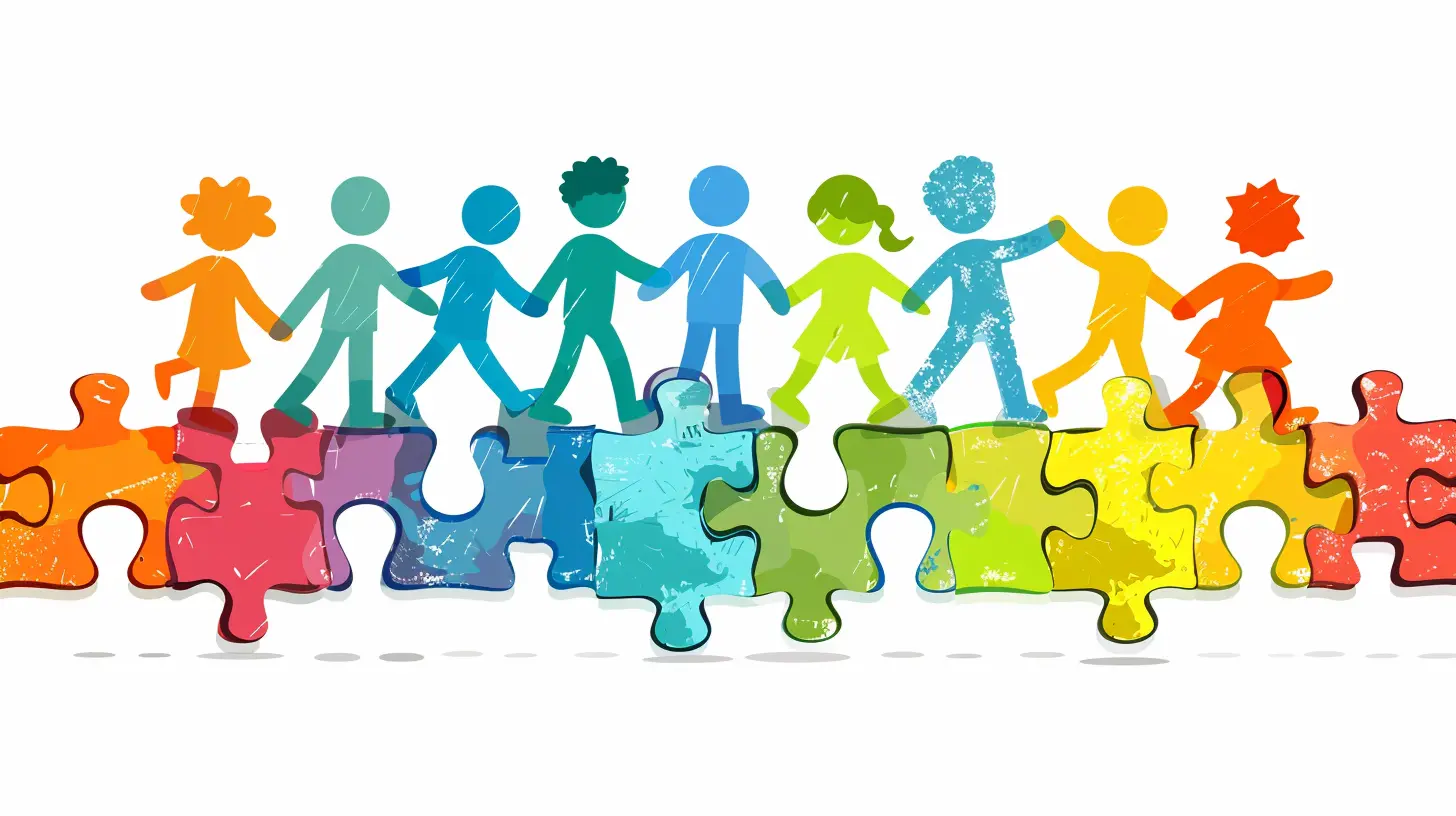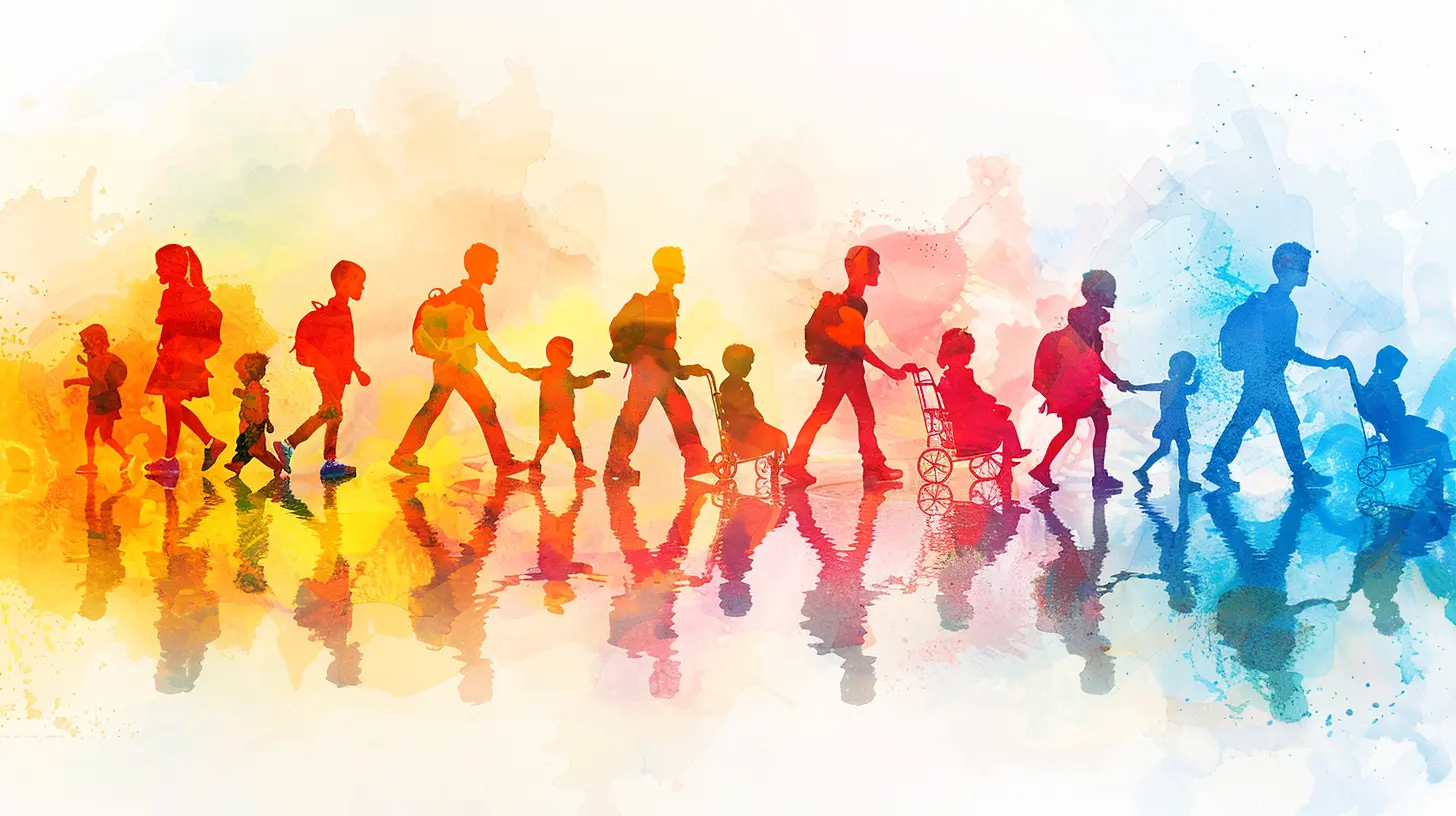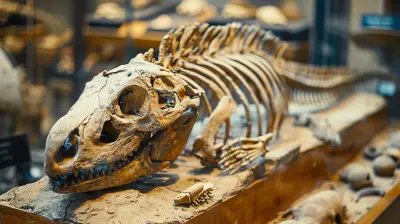The Importance of Collaborative Teamwork in Special Education
6 July 2025
Let’s get real—educating students with special needs isn’t a solo gig. It’s not about a superhero teacher swooping in with a cape and magically transforming everything. Nope. Special education is a team sport. And not just any kind of team sport—it’s that hardcore, brain-power, communication-heavy kind. Think of it as the “World Cup of Education,” with every team member playing a key position.
This is where collaborative teamwork steps in, and honestly, it's a game-changer. Whether you’re a teacher, parent, paraprofessional, therapist, or administrator—everyone needs to be on the same page, working together like a well-oiled machine.
So buckle up, we’re diving deep into why collaborative teamwork in special education isn’t just helpful—it’s absolutely essential.
What Exactly is Collaborative Teamwork in Special Education?
Let’s break it down. Collaborative teamwork in special education means that professionals and caregivers come together to support a student’s learning and development. It’s about shared goals, shared strategies, and a shared commitment to seeing a student thrive.We’re talking about:
- Special education teachers
- General education teachers
- Speech-language pathologists
- Occupational therapists
- Physical therapists
- School psychologists
- Parents/Guardians
- Administrators
- Assistive technology specialists
- Paraprofessionals
Each one brings a unique piece of the puzzle, and when they click together? Magic happens.
Why Is This So Important?
Alright, here comes the core of it. Why should we care so much about collaborative teamwork in special education? Because no one person can meet all the diverse and complex needs of a student with disabilities. It’s as simple as that.Let’s look at a few solid reasons:
1. Students Get What They Actually Need
Ever try to put together IKEA furniture without the manual? You might get there (maybe), but it’s going to take forever and probably fall apart. Now imagine trying to teach a student with multiple disabilities without input from different experts. It just doesn’t work.When a team collaborates, they share their know-how to build an education plan that makes sense for the student. That’s how students get meaningful, personalized supports—not just one-size-fits-all solutions.
2. It Brings Consistency Across the Board
Imagine the chaos if a student learned one way of doing math in the resource room, another way in gen ed, and a third version at home. That’s a recipe for confusion.Collaborative teams create consistency. Everyone—from the teacher to the speech therapist to the parent—is using the same language, strategies, and goals. And that consistency? It’s gold for kids who thrive on structure.
3. Better Decision-Making (Two Heads Are Better Than One, Right?)
You’ve heard it before: Teamwork makes the dream work. When a team puts their heads together, they make smarter, more informed decisions. Instead of guessing what might help a student, they gather data, share insights, and brainstorm solutions that actually work.It’s like having a bunch of experts throw their best ideas into one big pot. The result? A customized plan that covers all angles.
The Power of Including Families in the Team
Let’s talk about the MVPs of any special education team—parents and guardians. These folks know their child better than anyone else on the planet. They bring valuable insight, history, daily routines, and emotional support to the table.When families are involved in the decision-making process, magic happens. They’re more invested, more informed, and way more likely to be partners instead of bystanders.
Plus, let’s not forget—IEP meetings are legally required to include them. Not just out of obligation, but because their voice really does matter.
Barriers to Effective Team Collaboration (Yep, They Exist)
We’d love to say that every special education team works perfectly…but we’re not going to sugarcoat it. There are challenges. Here’s what can get in the way:1. Lack of Time
Everyone’s schedule is jam-packed. Trying to get a dozen professionals in the same room at the same time? It’s like herding cats.2. Communication Breakdowns
Not everyone speaks the same “educational” language. A therapist might drop terms that a teacher doesn’t fully understand. A parent might feel lost in the jargon. That leads to confusion and frustration.3. Power Struggles
Let’s be blunt—sometimes ego gets in the way. Collaboration should be about shared leadership, but occasionally, people fight for control, derail meetings, or dismiss others’ ideas.4. Lack of Training
Not everyone is trained in how to collaborate. Crazy, right? But it’s true. Many professionals are experts in their field but have never been taught how to effectively work as a team.Strategies for Building Strong Collaborative Teams
Alright, so how do we build a dream team that actually works? Here’s what needs to happen:1. Clear Communication Is Everything
Use plain language, active listening, and make sure everyone feels heard. Avoid jargon. Be honest and transparent. A strong team talks often—and more importantly—talks well.2. Define Roles Early On
From day one, everyone should know what their role is. Who’s the lead? Who’s tracking progress? Who’s working on what goal? When roles are fuzzy, things fall through the cracks.3. Regular Check-Ins
Don’t wait for the annual IEP meeting to talk. Teams should meet regularly—even briefly—to make adjustments, celebrate successes, and address new concerns. It keeps everyone on the same page and moving forward.4. Use Tech to Your Advantage
Email threads, shared folders, video calls, apps—use whatever tools make sense for your team. Technology can save time, reduce miscommunications, and keep data organized.5. Respect and Empathy
At the core of every strong team is mutual respect. When every team member feels valued and heard, they’re way more likely to contribute meaningfully. Don’t underestimate the power of a little empathy.Real-Life Success: What Happens When Collaboration Works
Let’s paint a picture. Imagine a student named Jordan—he’s on the autism spectrum. He struggles with sensory processing, social skills, and organization.Here’s how collaboration changes everything for him:
- His occupational therapist helps the teacher redesign the classroom seating to reduce sensory overload.
- His speech therapist creates scripts to help him initiate conversations with peers.
- His general education teacher embeds visuals in her lessons to support comprehension.
- His special education case manager coordinates weekly progress updates for the whole team.
- His parents share what works at home, like using timers for transitions.
Six months later? Jordan is thriving. His social anxiety has gone down, he’s participating in class, and he’s even made a few friends.
That’s the power of a team in action. That’s the importance of collaborative teamwork in special education.
The Role of School Leadership in Supporting Collaboration
Let’s not forget about principals and district leaders—they’ve got a huge part to play. If leadership doesn't prioritize collaboration, it’s likely to fall apart.Here’s what effective leadership looks like:
- Allocating time for team meetings
- Providing professional development on collaboration and communication
- Encouraging a culture of inclusion and respect
- Valuing and recognizing team efforts publicly
Great leaders set the tone. They make collaboration the norm—not the exception.
What the Research Says (Quick Nods to the Data)
If you’re a data geek (no shame in that), here’s a quick look at what the research shows:- Students with special needs perform better academically and socially when supported by collaborative teams.
- Teachers report higher job satisfaction when they work in collaborative environments.
- Collaborative IEP teams are more likely to set goals that are meaningful, measurable, and achievable.
The bottom line? It’s not just “nice” to collaborate—it’s backed by hard data.
Final Thoughts: It’s Not Optional. It’s Essential.
Let’s bring this home.Collaborative teamwork in special education isn’t a feel-good buzzword. It’s not a box to check. It’s the lifeblood of effective support for students with disabilities.
When done right, collaboration ensures that students aren't just surviving the school system—they're actually thriving in it. And isn't that the whole point?
Let’s ditch the silos, drop the egos, and come together as one unified team. Our students deserve nothing less.
all images in this post were generated using AI tools
Category:
Special EducationAuthor:

Anita Harmon
Discussion
rate this article
1 comments
Sloane Good
Sure, here’s a sassy and bold comment: Teamwork in special education isn’t just important; it’s essential! Let’s face it—collaboration is the secret sauce for success. Alone, we’re good, but together? We’re unstoppable! So, if you’re not collaborating, what’s stopping you from serving these incredible kids the best way possible?
August 2, 2025 at 4:00 AM

Anita Harmon
Absolutely! Collaboration is the key to unlocking the full potential of our students. Together, we can make a lasting impact!


